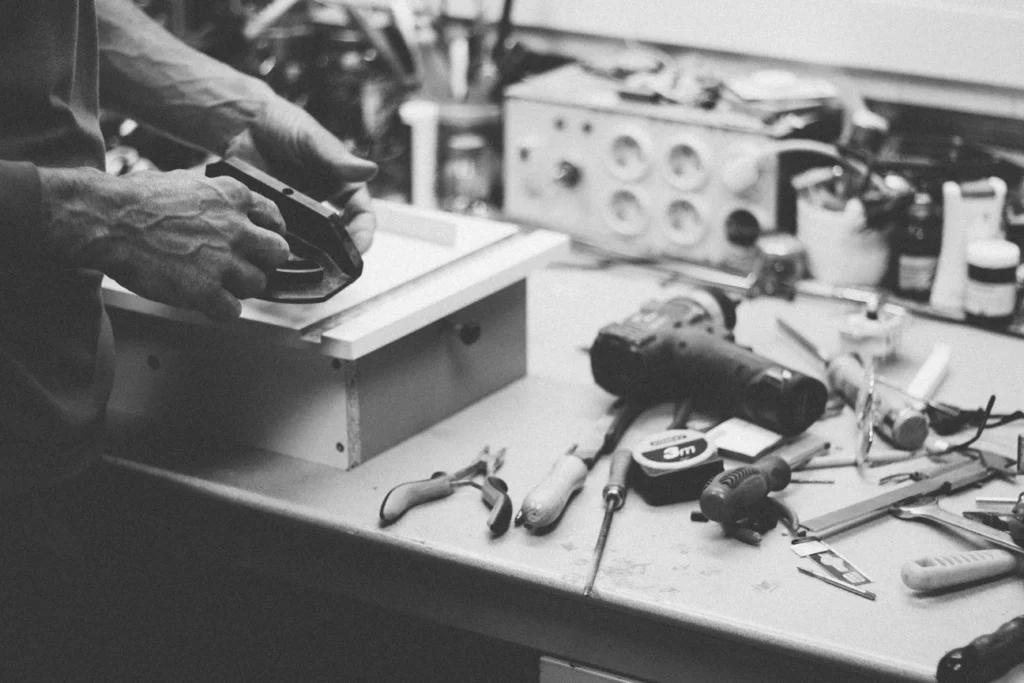Essential Safety Gear: Protection When Working with Sand Paper
Sandpaper, also known as abrasive paper, is a versatile tool used in various industries and DIY projects. It is commonly used for smoothing surfaces, removing paint or varnish, and preparing surfaces for painting or finishing. While sandpaper is a valuable tool, it can also pose risks to the user if not handled properly. In this article, we will explore the essential safety gear required when working with sandpaper to ensure the protection of the user.
The Importance of Safety Gear
Before delving into the specific safety gear required when working with sandpaper, it is crucial to understand why safety gear is necessary. Sandpaper is made up of abrasive materials such as silicon carbide, aluminum oxide, or garnet, which can cause injuries if they come into contact with the skin or eyes. Additionally, the process of sanding generates fine dust particles that can be harmful if inhaled. Therefore, wearing appropriate safety gear is essential to protect oneself from these potential hazards.
Protective Eyewear
When working with sandpaper, one of the most important safety gear items to wear is protective eyewear. The eyes are particularly vulnerable to injuries from flying debris or dust particles. Without proper protection, these particles can cause irritation, scratches, or even more severe damage to the eyes.
There are various types of protective eyewear available, including safety glasses and goggles. Safety glasses provide basic protection and are suitable for most sanding tasks. They are lightweight, comfortable to wear, and often have side shields for added protection. Goggles, on the other hand, provide a more secure seal around the eyes, offering better protection against dust and debris. When choosing protective eyewear, ensure that it meets the relevant safety standards and fits securely on your face.
Respiratory Protection
Another crucial safety gear item when working with sandpaper is respiratory protection. The process of sanding creates fine dust particles that can be harmful if inhaled. Prolonged exposure to these particles can lead to respiratory issues such as asthma, bronchitis, or even lung cancer.
There are several types of respiratory protection available, depending on the level of protection required. For light sanding tasks, a disposable dust mask or a respirator with a particulate filter can provide adequate protection. These masks are designed to filter out airborne particles, preventing them from entering the respiratory system.
For more intensive sanding tasks or when working with toxic materials, such as lead-based paint or asbestos-containing materials, a respirator with a higher level of filtration is necessary. These respirators, often referred to as „half-face“ or „full-face“ respirators, provide a tighter seal around the face and offer protection against a wider range of airborne hazards.
Hand Protection
When working with sandpaper, it is essential to protect your hands from potential injuries. The abrasive surface of sandpaper can cause cuts, abrasions, or blisters if not handled with care. Additionally, the chemicals present in some sanding materials can irritate the skin or cause allergic reactions.
One of the most common types of hand protection used when working with sandpaper is gloves. There are various types of gloves available, each designed for specific tasks and materials. For general sanding tasks, gloves made of nitrile or latex provide adequate protection against abrasions and irritants. These gloves are lightweight, flexible, and offer a good grip.
For more specialized tasks, such as working with chemicals or handling sharp objects, gloves made of neoprene or leather may be more suitable. These gloves offer better resistance to chemicals and provide additional protection against cuts or punctures.
Protective Clothing
In addition to protecting the hands, it is also important to safeguard the rest of the body when working with sandpaper. Wearing appropriate protective clothing can prevent injuries and minimize exposure to harmful substances.
When sanding, it is advisable to wear long-sleeved shirts and long pants to cover the skin. This helps protect against cuts, abrasions, and exposure to chemicals. Additionally, wearing a disposable coverall or an apron can provide an extra layer of protection, especially when working with dusty or toxic materials.
It is also important to consider the material of the clothing. Natural fibers, such as cotton, are preferable as they are less likely to generate static electricity, which can be a fire hazard when working with certain materials.
Hearing Protection
While not directly related to sandpaper itself, hearing protection is still an important consideration when working with power tools often used in conjunction with sandpaper, such as sanders or grinders. These tools can generate high levels of noise, which can lead to hearing loss or other hearing-related issues if proper protection is not worn.
There are several types of hearing protection available, including earplugs and earmuffs. Earplugs are small inserts that fit into the ear canal, providing a seal against noise. They are portable, inexpensive, and suitable for most sanding tasks. Earmuffs, on the other hand, cover the entire ear and provide a higher level of noise reduction. They are more suitable for prolonged or high-noise tasks.
Conclusion
When working with sandpaper, it is crucial to prioritize safety and wear the appropriate protective gear. Protective eyewear, respiratory protection, hand protection, protective clothing, and hearing protection are all essential items to consider. By taking the necessary precautions and using the right safety gear, you can minimize the risk of injuries and ensure a safe working environment.



















